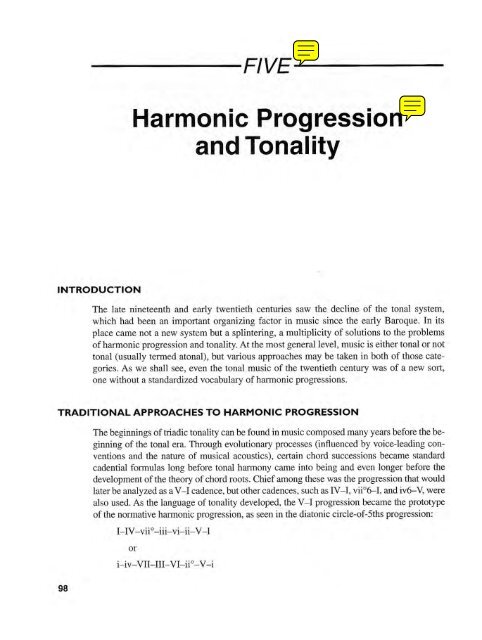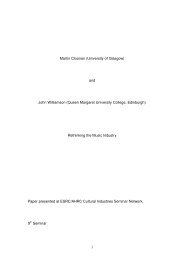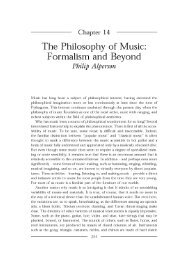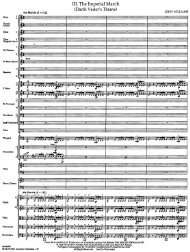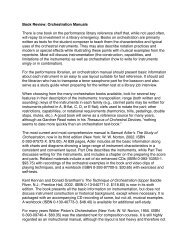TWENTIETH- - Synapse Music
TWENTIETH- - Synapse Music
TWENTIETH- - Synapse Music
You also want an ePaper? Increase the reach of your titles
YUMPU automatically turns print PDFs into web optimized ePapers that Google loves.
------FIVE------<br />
INTRODUCTION<br />
Harmonic Progression<br />
and Tonality<br />
The late nineteenth and early twentieth centuries saw the decline of the tonal system.<br />
which had been an important organizing factor in music since the early Baroque. In its<br />
place carne not a new system but a splintering, a multiplicity of solutions to the problems<br />
of harmonic progression and tonal ity. At the most general level, music is either tonal or not<br />
tonal (usually termed atonal), but various approaches may be taken in both of those categories.<br />
As we shall see, even the tonal music of the twentieth century was of a new sort,<br />
onc without a standardized vocabu lary of harmonic progressions.<br />
TRADITIONAL APPROACHES TO HARMONIC PROGRESSION<br />
98<br />
The beginnings of triadic tonality can be found in music composed many years before the beginning<br />
of the tonal era. Through evolutionary processes (influenced by voice-leading conventions<br />
and the nature of musical acoustics), certain chord successions became standard<br />
cadential formulas long before tonal harmony came i_nto being and even longer before the<br />
development of the theory of chord roots. Chief among these was the progression that would<br />
later be analyzed as a V- I cadence, but other cadences, such as IV- I, vii°6--I, and iv6--V, were<br />
also used. As the langoage of tonality developed, the V- I progression became the prototype<br />
of the normative hannonic progression. as seen in the diatonic circle-of-5ths progression:<br />
I- IV-viio-iii-vi- ii- V-I<br />
or<br />
i- iv-VlI-I1I- VI- jj O-V-i


